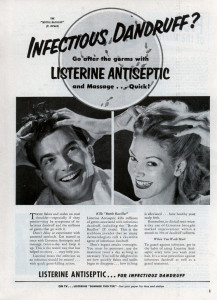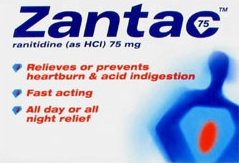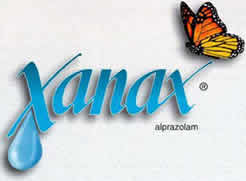Medicalization and disease mongering
I don’t have a lot of personal complaints about medicalization. As a woman, I don’t worry about erectile dysfunction or male pattern baldness. I haven’t had to decide to use Ritalin for a hyperactive child or growth hormones for a son who is shorter than his classmates. In my heart of hearts, I consider myself a social deviant (and am proud of it), but I don’t exhibit behavior that brings me to the attention of physicians, psychiatrists, or the law.
Many things that used to be considered a normal part of life – childbirth, menopause, insomnia, sadness, excess weight, aging, death – have been redefined as medical conditions and subjected to diagnosis and treatment. This process is called medicalization: Redefining a non-medical condition as a medical one. Medicalization is a major contributor to the health culture. It broadens the definition of health and encourages us to think of ourselves as in need of medical attention.
The active process of converting a benign condition into a medical disease is called disease mongering. Lynn Payer wrote a whole book on the subject: “[D]isease mongering – trying to convince essentially well people that they are sick, or slightly sick people that they are very ill – is big business. For people to use a diagnostic product or service, they must be convinced that they MAY BE sick. And to market drugs to the widest possible audience, pharmaceutical companies must convince people – or their physicians – that they ARE sick.”
The art of branding a condition
According to Peter Conrad, an authority on medicalization: “The key to medicalization is definition. That is, a problem is defined in medical terms, described using medical language, understood through the adoption of a medical framework, or ‘treated’ with a medical intervention.”
This is exactly what Vince Parry, an advertising expert on branding, advocates for the pharmaceutical industry in his article “The art of branding a condition.” By “condition” he means a disease or medical condition. “If you can define a particular condition and its associated symptoms in the minds of physicians and patients, you can also predicate the best treatment for that condition.” In other words, if you invent the disease, you own the market for its treatment.
The shamelessness with which Parry advocates turning benign conditions into serious problems is breath taking. Instead of simply branding a product, you brand the condition your product can treat. He considers this taking branding to the next level of sophistication.
Historical example: Listerine
 Parry begins his article with an historical example from the 1920s. Did you know that Listerine was originally marketed as a cure for dandruff and as a floor cleaner? The product was relatively unsuccessful until the manufacturer decided to create “awareness – and anxiety – around a seriously-sounding medical condition: halitosis. … [A] company can elevate the benign notion of unpleasant breath to the serious and risk-affirming status of a condition deserving vigilant treatment (with Listerine).” Warner-Lambert, the manufacturer, increased revenues from $115,000 to $8 million in seven years.
Parry begins his article with an historical example from the 1920s. Did you know that Listerine was originally marketed as a cure for dandruff and as a floor cleaner? The product was relatively unsuccessful until the manufacturer decided to create “awareness – and anxiety – around a seriously-sounding medical condition: halitosis. … [A] company can elevate the benign notion of unpleasant breath to the serious and risk-affirming status of a condition deserving vigilant treatment (with Listerine).” Warner-Lambert, the manufacturer, increased revenues from $115,000 to $8 million in seven years.
Branding to “Raise the bar of seriousness”: Zantac
To medicalize a condition, you can describe it with medical language, place it in a medical framework, and treat it with medical intervention. This is what happened when heartburn met Zantac. The prescription drug Zantac was originally approved for the treatment of ulcers. But Glaxo had its eyes on the much larger heartburn market. It’s estimated that 10 to 20% of us have an episode of acid reflux at least once a week.
Enter GERD: Gastroesophageal reflux disease. “Heartburn … did not seem to warrant a prescription drug and was perceived to be well managed by over-the-counter remedies. GERD elevated the medical importance of the condition by presenting it as an acutely chronic ‘disorder’ with an underlying physiologic etiology and the potential for serious longer-term consequences if left unresolved.”
 Glaxo (now GlaxoKlineSmith) created an Institute for Digestive Heath. The Institute sponsored its own research and equated GERD with more serious gastrointestinal diseases simply by discussing them in the same context. One of the missions of the Institute is to raise public awareness about issues relating to digestive health. GERD accounted for 65% of GlaxoKlineSmith’s annual $2 billion sales of Zantac.
Glaxo (now GlaxoKlineSmith) created an Institute for Digestive Heath. The Institute sponsored its own research and equated GERD with more serious gastrointestinal diseases simply by discussing them in the same context. One of the missions of the Institute is to raise public awareness about issues relating to digestive health. GERD accounted for 65% of GlaxoKlineSmith’s annual $2 billion sales of Zantac.
Reduce stigma by redefinition: Viagra
Sometimes medicalization requires more than defining a problem in medical terms. If a condition is socially embarrassing, it needs to be redefined so that patients feel comfortable discussing it with a doctor.
 Before Viagra, impotence was a medically recognized condition, but it was associated either with physical trauma or a lack of libido – not something men were eager to talk about. Pfizer came up with the term erectile dysfunction (ED). The beauty of this term is that it “refocused the condition from being associated with a lack of potency (i.e., male virility) to the more enlightened concept of a physical loss of function that could be simply reversed.” You don’t even have to say “erectile dysfunction,” either in advertising or to a doctor. You can simply use the acronym ED: “an easy password between physician and patient to initiate a formerly difficult conversation.”
Before Viagra, impotence was a medically recognized condition, but it was associated either with physical trauma or a lack of libido – not something men were eager to talk about. Pfizer came up with the term erectile dysfunction (ED). The beauty of this term is that it “refocused the condition from being associated with a lack of potency (i.e., male virility) to the more enlightened concept of a physical loss of function that could be simply reversed.” You don’t even have to say “erectile dysfunction,” either in advertising or to a doctor. You can simply use the acronym ED: “an easy password between physician and patient to initiate a formerly difficult conversation.”
The US estimate of sales of Viagra in 2004 was $919 million. Viva Viagra!
Fulfilling unmet needs: Xanax and Sarafem
The Diagnostic and Statistical Manual of Mental Disorders (DSM) listed 106 disorders when it was first published in 1952. The latest edition lists 297. Much of the increase comes from subdividing disorders into individual components, each with its own treatment option.
 With much pride (the man is truly shameless) Parry states: “Not surprisingly, many of these newly coined conditions were brought to light through direct funding by pharmaceutical companies, in research, in publicity, or both.”
With much pride (the man is truly shameless) Parry states: “Not surprisingly, many of these newly coined conditions were brought to light through direct funding by pharmaceutical companies, in research, in publicity, or both.”
In the DSM, panic disorder had been lumped under the category of anxiety neurosis. “Without a well-branded condition, patients experiencing panic attacks often went to cardiologists, thinking their problem was a heart condition, only to be labeled ‘cardiac complainers’ and hypochondriacs due to a lack of physical pathology.”
To the rescue: The thought leader David Sheehan. (Thought leaders is often a code word for doctors and researchers paid by pharmaceutical companies to promote “conditions” and drugs. Some highly respected, influential doctors who are recognized and pursued as highly desirable “thought leaders” refuse to accept drug money.) Sheehan came up with a new way to describe, diagnose, and treat panic disorder. Upjohn, the maker of Xanax, paid for research, publications, and speaking tours to cardiologists. Since it appeared in DSM-III in 1980, the incidence of panic disorder has increased 1000-fold.
 One final example: Sarafem for premenstrual dysphoric disorder (PMDD). The interesting thing about Sarafem is that it is identical, in formula and dose, to Prozac. This presented a marketing problem, however, since Prozac suggests the patient has a mental problem. “By changing the brand name from Prozac to Sarafem – packaged in a lavender-colored pill and promoted with images of sunflowers and smart women – Lilly created a brand that better aligned with the personality of the condition for a hand-in-glove fit.”
One final example: Sarafem for premenstrual dysphoric disorder (PMDD). The interesting thing about Sarafem is that it is identical, in formula and dose, to Prozac. This presented a marketing problem, however, since Prozac suggests the patient has a mental problem. “By changing the brand name from Prozac to Sarafem – packaged in a lavender-colored pill and promoted with images of sunflowers and smart women – Lilly created a brand that better aligned with the personality of the condition for a hand-in-glove fit.”
This is for real
This article is an amazing example of medicalization and disease mongering in action. It’s so outrageous I could believe it was an April Fool’s joke, but unfortunately both the author and the publication (Medical Marketing and the Media) are legitimate. It appears to be a promotional piece designed to attract the pharmaceutical industry to Parry’s consulting services at Y Brand (“an inVentiv Health company”).
Sources:
(Hover over book titles for more info. Links will open in a separate window or tab.)
Vince Parry, “The Art of Branding a Condition,” Medical Marketing and Media, May 2003
Lynn Payer, Disease-Mongers: How Doctors, Drug Companies, and Insurers Are Making You Feel Sick
Peter Conrad, The Medicalization of Society: On the Transformation of Human Conditions into Treatable Disorders
Listerine (Wikipedia)
Viagra vs. Levitra (Forbes.com)
DSM – Diagnostic and Statistical Manual of Mental Disorders (Wikipedia)


Sorry, comments are closed for this post.